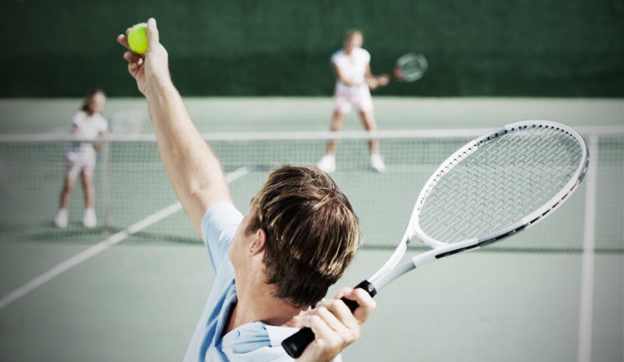IMPROVE MY GAME
Articles
Improve Your Teaching by Incorporating Other Sports

Rarely will a golf instructor come upon a skilled ball striker who did not attain proficiency at some other sport such as baseball, hockey, soccer or tennis before trying his or her hand at golf. For the vast majority of players, golf was not their first sport. In fact, more often than not, it’s the last sport they pick up. Kids learn to throw, kick, or take cuts in tee-ball years before they’re handed a driver or a 7-iron to swing. When I’m instructing players, I always ask about their prior athletic experience and use their familiarity with other sports to better convey what I’m trying to teach them in golf.
What exactly is that key ingredient that many sports have in common with golf? To me, what stands out is this: Most sports require us to efficiently transfer energy from the heaviest part of the body outward to a lighter part of the body. Once the energy arrives at that outer point, it will continue on through the racquet, bat, stick, etc., or in the case of a sport like soccer, directly into the ball. I see this play out over and over again using 3D motion capture on all types of athletes.
3D motion capture offers a window into what really happens as athletes of all levels try to load up and then release energy in a sporting act. In studying the kinematic sequence of both golfers and other athletes, the similarities are striking.
The first critical event in the sequence, before rotation starts, is the ground-reaction to applied force. Every athlete in every sport initiates motion by pushing into the ground and essentially, having the ground “push back.” This ground-reaction force is what provides the energy to get started.
Picture a pro tennis player about to serve, only picture him on a sheet of ice just thick enough to hold his weight when he stands normally. He begins his motion. By the time the tennis ball reaches its maximum height from the toss, you’ll hear a loud crack. The player, attempting to gather energy in his lower body, will have pressed hard enough against the ice to break it.
Once the ground-reaction force has been released, that energy travels through the rest of the body in an efficient sequence respective to his or her sport. 3D helps us measure that efficiency. Of course we know the best in the world are efficient, but what about the rest of us? Since I devote most of my teaching time to weekend golfers, I see a lot of sequences that are far from what you would call optimal. So what do we do when we have a student who has an inefficient golf motion but a decent background in other sports?
I begin by focusing first on what I do not want to do:
- I do not try to immediately correct the player’s motion with golf technique drills.
- I do not try to explain what should be done by overly describing the golf swing.
Let’s not forget, the muscles are only capable of doing what the brain tells them to do. Thus, if the sequence is not how we want it to be, then we need to change the athlete’s mental perception first. I’ve observed this tends to happen more quickly and smoothly if I don’t get trapped in traditional golf nomenclature. I focus on their past athletic experience and talk to them in nomenclature they understand.
A great tactic is to set the golf club down and return to their most proficient sport, be it soccer, baseball, football, tennis or virtually any sport. Again, these activities all require efficient sequencing to produce any level of competency and that sequence has many similarities to the golf sequence. The other reason I find it helpful to rely on other sports is that, for the most part, they are not over-coached and over-analyzed the way the golf swing is. We never see Monday Night Football showing us a super-slow-motion replay of Phillip Rivers and his technically awkward throwing motion, telestrated with lines and circles to show correct and incorrect elbow positions or forearm angles. The golfer’s obsession with having a “beautiful” swing is half the problem in the first place, but that’s a topic for another time.
If you were to visit my teaching tee, you would see there are tennis, badminton and squash racquets, hockey sticks, lacrosse sticks, footballs, baseballs, etc. This is so I can have my students perform skills they are efficient at and work on ingraining the sensations that apply to the golf swing. If the client has no experience with any of these sports, I will always start with throwing or kicking. These two simple motions can beautifully illustrate the basics of the golf swing and how one must move to develop power. Once they can properly throw or kick a ball, we move on to racquets or bats.
When the sports skills I am talking about were originally learned as kids, instinct was relied on. There wasn’t a lot of thinking and analysis. That’s one important reason why these learned motions are valuable assets to go back to and draw upon. Try this out in your coaching and teaching, or apply them to your personal practice regimen. It’s likely you will see and feel dramatic improvements in the efficiency of your swing.
